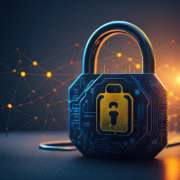The Cybersecurity Landscape for Schools and Non-profits
Cybersecurity has become a crucial concern for all sectors, including schools and non-profits. These organizations, often handling sensitive information yet operating with limited resources, are particularly vulnerable to cyber threats. At SecureWon, we understand the unique challenges faced by these institutions and are dedicated to providing robust security solutions tailored to their needs. In this blog, we’ll explore the current cybersecurity landscape for schools and non-profits, highlight common threats, and offer strategies for enhancing security.
The Current Cybersecurity Landscape
Schools: Educational institutions are prime targets for cyberattacks due to the valuable data they hold, including personal information of students, parents, and staff, as well as intellectual property. The shift to online learning during the COVID-19 pandemic has only increased the attack surface, with schools adopting various online tools and platforms, often without the necessary security measures.
Non-profits: Non-profit organizations frequently handle sensitive donor information and financial records. Their mission-driven focus and often limited IT budgets make them attractive targets for cybercriminals. Additionally, non-profits might not prioritize cybersecurity due to a lack of awareness or resources, further exacerbating their vulnerability.
Common Cyber Threats
Phishing Attacks: Phishing remains a significant threat, where attackers trick individuals into revealing sensitive information through deceptive emails or websites. Schools and non-profits are particularly susceptible due to the high volume of email communication.
Ransomware: Ransomware attacks involve encrypting an organization’s data and demanding a ransom for its release. Both schools and non-profits have fallen victim to such attacks, leading to disruptions in operations and significant financial losses.
Data Breaches: Data breaches occur when unauthorized individuals gain access to confidential information. The impact can be severe, resulting in the exposure of personal data, financial loss, and damage to an organization’s reputation.
Insider Threats: Insider threats can come from employees, volunteers, or third-party vendors who have access to sensitive data. These threats might be malicious or due to negligence, but either way, they pose a substantial risk.
Strategies for Enhancing Cybersecurity
Implement Comprehensive Security Policies: Both schools and non-profits should develop and enforce comprehensive cybersecurity policies. These policies should cover data protection, password management, and incident response procedures. Regularly updating and reviewing these policies ensures they remain effective against evolving threats.
Educate and Train Staff: Human error is a significant factor in many cyber incidents. Regular training sessions can help staff recognize phishing attempts, understand the importance of strong passwords, and follow best practices for data protection. Creating a culture of security awareness is essential.
Use Multi-Factor Authentication (MFA): Implementing MFA adds an extra layer of security by requiring users to provide two or more verification factors to access systems. This can significantly reduce the risk of unauthorized access.
Regularly Update Software and Systems: Keeping software, systems, and applications up to date is crucial in defending against cyber threats. Regular updates and patches address vulnerabilities that cybercriminals could exploit.
Partner with Cybersecurity Experts: Given the resource constraints often faced by schools and non-profits, partnering with cybersecurity experts can provide access to advanced security solutions and expertise. At SecureWon, we offer tailored cybersecurity services that address the unique needs of these organizations, helping them safeguard their data and operations effectively.
The cybersecurity landscape for schools and non-profits is fraught with challenges, but with the right strategies and support, these organizations can protect themselves against threats. At SecureWon, we are committed to empowering schools and non-profits with the tools and knowledge they need to navigate the complex world of cybersecurity. By staying vigilant, educated, and prepared, these institutions can focus on their core missions without compromising on security.
SecureWon at its core is a national technology services company. What separates us from other technology service providers is our commitment to providing superior documentation and accurate reporting of your organization’s security posture. This attention to detail and quality of our services is what drives us. Contact us today for a free assessment of your technology infrastructure.




